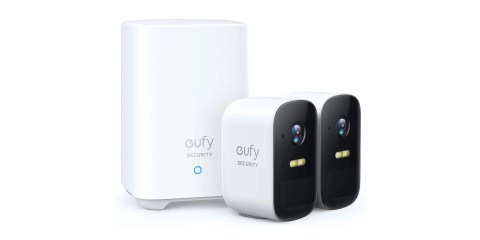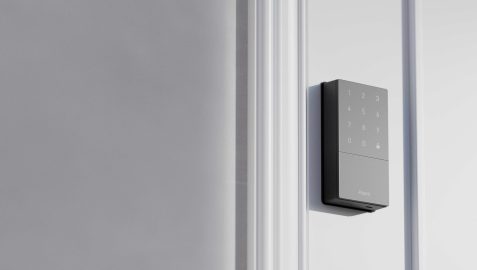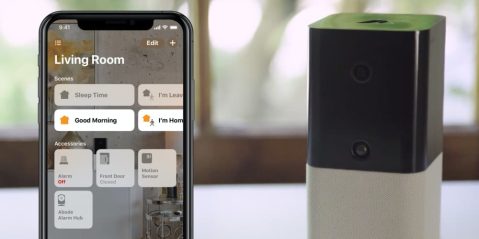
Integrating your cameras into HomeKit is one of the best ways to build up your smart home environment, but which cameras are the best? This week, I will give you all the information about the best HomeKit cameras for securing the outdoors of your home in 2021.
HomeKit Weekly is a series focused on smart home accessories, automation tips and tricks, and everything to do with Apple’s smart home framework.
Table of contents
HomeKit Secure Video
HomeKit Secure Video isn’t a requirement for using cameras with HomeKit. Some products support HomeKit but don’t yet support HomeKit Secure Video.
If a product supports only HomeKit, you can use it for automations like using a camera’s motion sensor to trigger a light or view the live stream inside Apple’s Home app.
If a product supports HomeKit Secure Video, the camera will store its footage in iCloud. To use HomeKit Secure Video, you’ll need a compatible camera, HomeKit Hub (Apple TV, HomePod, or HomePod mini), and a minimum of a 200GB iCloud storage plan. If you want to use more than one camera, you’ll need the 2TB iCloud storage plan.
HomeKit Secure Video includes end-to-end encryption. As our world becomes more connected, it’s even more important to consider the security of your data from the beginning. In a few decades, there will no longer be homes vs. smart homes. All homes will be smart homes. By starting with a secure foundation, customers can know that they can have all the benefits of modern conveniences while knowing their privacy is still intact.
As you think about putting devices in your home that can hear and see you, consider the companies making these products. What are their business models? What is their track record of protecting customer privacy? Is privacy at the core of what the company values? In my experience, the only major technology company that cares deeply about your privacy is Apple, and that is why I believe HomeKit Secure Video is a fundamental part of the smart home experience.
Outdoor HomeKit Cameras
For outdoor HomeKit cameras, one of the first things you’ll need to decide is if you want to go battery-powered or hardwired. There are benefits to both, though.
For battery-powered cameras, it’s straightforward to install and upgrade in the future. To get started, you’ll do the initial charge, get them on your Wi-Fi network, add to HomeKit, and then mount them wherever you want coverage. Depending on the camera, you’ll have to tame them down a few times a year to charge them, though.
One of the aspects of battery-powered cameras that I think goes under-appreciated is how easy it is to upgrade them in the future. If a new model comes out with higher quality or longer battery life, you don’t have to worry about re-running the power cable to an outlet. All you have to do is swap the cameras out.
For hardwired cameras, you’ll get the benefit of mounting it once and then not having to worry about it again. The significant downside here is that you’ll need to get it powered. Most outdoor cameras generally recommend plugging into an indoor/attic outlet as most plugs are not weatherproof. You can get around using a product like SOCKiTBOX to seal the plug up from outdoor elements.
eufyCam series

The eufyCam series of products have long been some of my favorite HomeKit products. They come in various models with ranging battery life and camera quality.
The eufyCam products require a base station connected to Wi-Fi or ethernet, and the cameras then talk to the base station. There are no monthly fees for storing on the base station, but if you use HomeKit Secure Video, you’ll have the recurring iCloud storage subscription.

While the eufy cameras are battery-powered, eufy now offers a solar charging option if your cameras are located in a place to receive direct sunlight. When the eufy cameras are using HomeKit Secure Video, it doesn’t get the fully quoted battery life as it has to communicate with HomeKit, so the solar charging option will save you from having to take the cameras down to charge.
Arlo Cameras
Another popular outdoor HomeKit camera product is the Arlo cameras
Like the eufy cameras, they are tied to a base station but are also compatible with HomeKit. The Arlo Pro 3 series is a great option to start with if you want to go that direction. Still, Arlo has multiple options compatible with HomeKit, including the Arlo Ultra, Essential Video Doorbell Wired, Pro 4, Pro 3, Pro 3 Floodlight Camera, Pro 2, and Pro camera.
Arlo cameras don’t support HomeKit Secure Video, though. Arlo sells a cloud-based subscription service for its cameras. It supports viewing your live streams in the Home app and setting up HomeKit automations.
Logitech Circle View

Last week, I published my review of the Logitech Circle View camera. For a hardwired outdoor HomeKit camera, it’s hard to beat. It’s compatible with HomeKit Secure video and doesn’t even need a third-party app to use the camera. All firmware updates are handled over-the-air.
Using the Circle View camera inside the Home app, I was able to set a recording zone and also ignore vehicle detection for areas that see frequent drive-bys. My house is the first in my neighborhood, so we have cars driving by every few minutes. If this camera were covering my driveway, I’d likely want the vehicle detection on, but since it’s covering my side yard, I don’t want a constant stream of cars driving by my house clogging up my HomeKit Secure Video feed.

Logitech sells a wireless indoor/outdoor camera that supports HomeKit Secure Video. If you need a single area cover, this camera will be great, but otherwise, it’ll be more cost-effective to use one of the eufy options.
Wrap up on best outdoor HomeKit cameras
Before deciding which HomeKit cameras to use to secure the outside part of your home, you need to decide if you want battery-powered or hardwired. You’ll then need to decide if you require HomeKit Secure Video support.
I am personally using the eufy cameras and the Logitech Circle View, and I am very happy with both products.
FTC: We use income earning auto affiliate links. More.









Comments